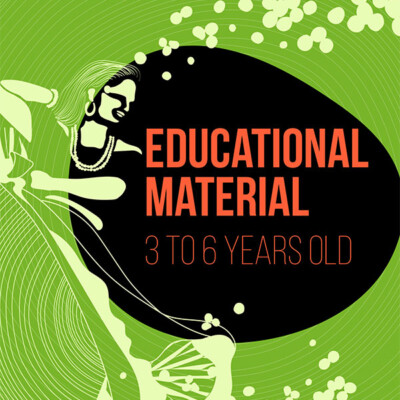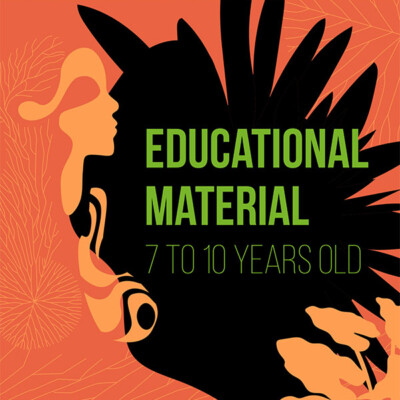Welcome teachers and educators!
There are many Amazons. This is the idea that permeates the exhibition “Amazonian Times”, of which this educational material is part of. Through some transdisciplinary proposals, we seek to align the objectives of the National Core Curriculum (BNCC), especially to law 11.645/08, with the more than necessary opportunity to discuss the Amazon region and all the threatened wealth that constitutes it. With proposals for different age groups, if you, the teacher, are unable to go to the Museu do Amanhã or want to extend your visit experience to the classroom, don’t worry – we prepared a trip at the pace of Carimbó to visit the values and questions present in the six axes of the exhibition. Come with us!
The first stop is for children between 3 and 6 years old to get to know Maraca through the My Maraca workshop, which explores rhythms and sensory elements through this magical musical instrument. We will continue to find out Where does the Amazon river dolphin live? accompanied by the carimbó of Dona Onete, as well as legends and stories from the Amazon region.
Then we travel back in time to the land of Pindorama in Nheengatu – Good Language. Students aged 7 to 10 will get in touch with the Tupi root language Nheengatu to find out more about the Indigenous languages that still live and create in our country. This proposal reflects on cosmologies, collectivity and connection. Students of this age group will still have guaranteed fun in the games present in Flavors of the Amazon, where we will have a memory game and an agility game to remind us of the flavors of nature and the need for tradition to maintain the forest.
Our journey continues along the rivers of In the Flow of History, an activity designed so that students aged 11 to 14 can become aware of the reality of the fresh waters that surround us. It is an invitation to cartographic reflection, having the Amazon River as a starting point. They will also visit medicinal and phytotherapic plants through the activity Pollinating Knowledge to recognize and value the biodiversity and traditional knowledge of our country.
Finally, in the Future in Debate activity, adolescents aged 15 to 17 will stop at the UN to learn about the 17 Sustainable Development Goals. In this forum designed for them to exercise their desire for change and sense of justice, they will learn about the second objective which is about food security and sustainable agriculture. The subjects that cross the theme of food are diverse: culture, biodiversity preservation, deforestation, and alternative forms of production. We end our trip with High School students getting in touch with urgent issues for the survival of the forest and humanity with the activity Seeding for Tomorrow. For this, they will meet artist-activists who dialogue about the limits and powers of individual and collective actions as a way of cultivating a new idea of humanity.
We hope to provide you with seeds that can be cultivated and disseminated, creating strong and large roots throughout the school community, reaching homes, neighborhoods, the city and its surroundings. May we all reap the fruits of the collective work of awareness, citizenship and empowerment generated from the appreciation of the diversity of life.
The river flow is intense, and we have a lot to discover.
Are you coming with us on this trip?



